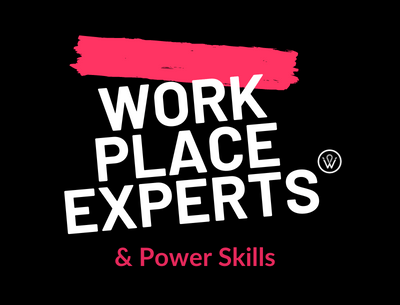
 Transformation through ownership and employee-centric practices.
Transformation through ownership and employee-centric practices.
Continuous learning is no longer a nice to have for your organization. Rather it is a core ingredient for business agility and has become a necessity to keep up with the pace of innovation and change. But how do you build an organization with continuous learners?
I often have conversations at organizations where the need for continuous learning so far hasn’t felt vital. When I say that “we activate and empower employees to become continuous learners” I often receive the question:
“How do you get people motivated to take part in your sessions in the first place?”
The short answer to that question: willingly.
The more elaborate answer? Read about it in this article where I spill 12 Prototype You secrets on how we build organizations with continuous learners.
Creating ownership through autonomy & Commitment
You are the director of your own life. That’s something we strongly believe in at Prototype You. No organization, team lead or crazy uncle should be the one to decide what you do with your life. So, if I could mention only one thing about how to create organizations with continuous learners, it would be nurturing employee ownership on every step of the way.
Successes of continuous learning are very likely to be short-lived when employees are forced into continuous learning. Especially when they don’t feel the need for it or don’t feel joy doing so. That’s why – throughout our Prototype You experience – we build ownership using the power of active, public, and voluntary commitments.
As described by Robert Cialdini in his well-known book Influence: The Psychology of Persuasion, when people actively commit to something, they are much more likely to follow through. A public commitment adds a level of accountability that makes people actually stick to their words. The voluntary part is critical, because when people don’t decide for themselves their commitment is not sustainable.
So, how do you specifically build employee ownership and inspire employees to become continuous learners? Read below 12 strategies you can apply to create a continuously learning workforce.
How can you inspire employees to become continuous learners?
Richard Branson already said “Clients do not come first. Employees come first. If you take care of your employees, they will take care of the clients.“
If you – as an organization – want to nurture a continuous learning ecosystem it is paramount that you take on an employee-centric approach, where your organization works in service of your employees. We made a list of 12 principles that you can use to turn your employees into continuous learners.
1. Voluntary and active subscription.
That’s right. We start building employee ownership even before our first Prototype You session starts. When we start in an organization every employee has to actively and voluntarily indicate that he/she wants to take part in the Prototype You journey. Actively deciding to show up makes all the difference on how people show up.
2. Make it feel fun, personal and valuable.
Naturally you want people to show up. That’s why – when we start at a new client – we always record a unique video to introduce ourselves and what you can expect from the Prototype You journey. By showing experiences from previous participants we make people further understand what’s in it for them. In a nutshell, aim for employee enthusiasm, curiosity and make the journey feel personally valuable.
3. Start small.
Always, no exceptions. First of all, you only get one chance to make a first impression. By starting small you are better able to control the quality of the first experience. Second, from this first experience you can learn, adapt and deliver even more value as you scale up. Third, it creates a sense of exclusivity so that people will want to subscribe. Fourth, you will have an energetic group of early enthusiasts who are motivated to join the experience and make the most out of it.
4. Turn early enthusiasts into eager ambassadors.
Focus your energy on creating a great first experience. Your early enthusiasts will transform into eager ambassadors. Have them lead the process and spark enthusiasm with co-workers and peers. Things are about to get viral.
5. Listen to the resistance.
Listen to employees that don’t want to be part of the continuous learning experience… yet. Show empathy, appreciate that they voice their concerns and genuinely try to understand their motivations. Demonstrate that you value their feedback, remove obstacles where you can and communicate changes you have made. Odds are trust between parties will grow, initial critics will give the experience a go and turn into your biggest fans.
6. Help employees develop from their own ambitions and talents.
Consider people’s development needs first and then align them to the needs of the organization. Don’t impose learning objectives on employees that purely serve the organization’s interests. As Daniel Pink argues employee engagement spikes when people can work and develop according to principles of autonomy, purpose and mastery. In other words: employee engagement increases when learning is self-directed, contributes to a meaningful goal and is about developing one’s talents. So, for employees to become continuous learners make sure to create a personal pull instead of an organizational push.
7. Autonomy all the way.
Facilitate a process where employees make active, public, and voluntary commitments related to their personal development, on every step of the way. When employees do, the odds of following up on a personal plan of action increase. Naturally, you can support employees on their journey by asking important questions. However, never judge, don’t tell employees what to do and what is right or wrong. Think with employees, not for them.
8. Peer-support and buddies.
Empower your employees to support each other on their journey of personal development. By sharing obstacles and solutions with each other (peer recognition), by learning from and with each other (peer collaboration) and by public commitments to one another (peer accountability). The latter is twofold: committing to execute your own plan of action and to help your buddy execute his/hers. These kinds of public commitments will increase the likelihood of following up on one’s plans. After all, it’s easier to go to the gym with a buddy than alone, right?
9. We all need a break sometimes.
Keep practicing the principles of employee ownership, always. We are not machines that consistently keep producing all the time. We are living organisms with changes in energy and motivation. Sometimes we just need a break and don’t feel like learning. Maybe you feel things are okay as they are, maybe priorities shift, or maybe you just don’t have the energy to learn something new. Whatever the reason, it’s okay. We are all human. Let people decide if they want to slow down or speed up. Key to sustainable continuous learning is that employees will remain to have autonomy over their decision to learn (or not), over and over again, endlessly.
10. Gamification and Rewards.
Just make learning so appealing, fun and rewarding that people don’t ever want to stop. Create a secret buddy handshake, craft a fun team name and determine how you are going to celebrate wins. Reward the act of learning, having the courage to develop and helping coworkers on their journey of personal development. And… make learning playful and fun!
11. Have Decider buy-in.
Creating a culture of continuous learning only works when decision makers in the organization believe in the need for continuous learning, the approach to make it happen and have access to the necessary means to support such a transformation. Sustainably transforming to a continuous learning culture means that management should see continuous learning as an investment rather than a cost item.
12. Walk the talk.
So you want to create a workforce with continuous learners? Own it. What you do is who you are. Clearly demonstrate that your organization supports employee-centric continuous learning. Actions speak louder than words. Allocate sufficient time and resources for continuous learning and really make it a priority. For example, allow employees to have enough time for introspection and do not cancel these valuable moments of reflection for more urgent work on client projects. Also, practice what you preach. Really show that continuous learning takes place at all levels of the organization. No exceptions.
That’s it! The first step? Just start. Experiment. Learn. Adjust and improve. At Prototype You we are very much continuous learners ourselves. What other strategies do you use to cultivate a workforce full of continuous learners?

Written by Wouter Smeets from Prototype You
Prototype You helps organizations in cultivating a happy and healthy workforce that delivers great work. We do so through personalized peer-to-peer learning programs that include best practices from lean, agile and design thinking. Wouter Smeets co-founded Prototype You so that employees can help one another grow on a journey of lifelong learning, and cultivate that Nelson Mandela mindset: “I never lose. I either win or learn.”
So, where to go from here?
Feel free to reach out at wouter@prototypeyou.nl or book our Prototype You demo right here. In 30 minutes you’ll experience our hands-on approach, prototype your learning journey towards your ideal career path, and know how we can be of service to your organization.





